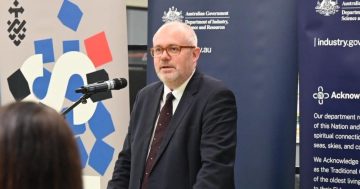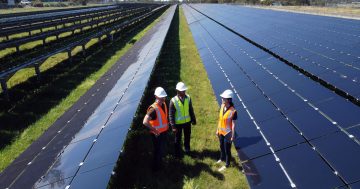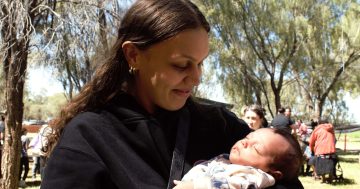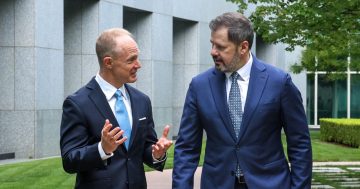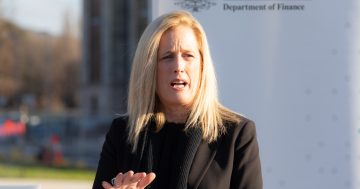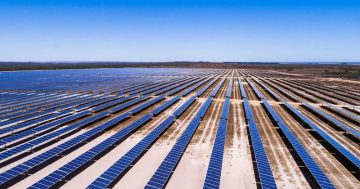Asha Barbaschow* says this is like hiring all of the ACT and Hobart.
 In the lead-up to the 2022 Federal Election, Labor promised the creation of 1.2 million tech jobs by 2030.
In the lead-up to the 2022 Federal Election, Labor promised the creation of 1.2 million tech jobs by 2030.
Today, the minister responsible for making sure these tech jobs have the opportunity to exist showed us his plan, well, a report that will help the government make a plan.
Central to the plan, is for government and industry to work together.
This idea is nothing new, we’ve seen it many times over the years, most notably in former Prime Minister Malcolm Turnbull’s $1 billion ‘Ideas Boom‘.
But now, Minister for Industry and Science Ed Husic is attempting to pick up where the last tech-savvy PM left off.
“Australia will need an additional 650,000 tech workers by 2030 to meet the 2030 target and we can only do that if the tech industry and the government works closely together,” he said in a statement.
“We will create an environment for success by building our national training system, backing final year student and graduate entrepreneurs, and buying and making things in Australia.”
That sounds great.
But 650,000 is a lot.
For some context, Canberra is home to around 431,000 people.
650,000 is mind-blowing. So, what’s the plan?
Husic is hoping to use a 38-page report prepared by the Tech Council of Australia as his blueprint.
The report is called “Getting to 1.2 million: Our roadmap to create a thriving Australian tech workforce” and it basically does what it says on the tin.
The report highlights five key barriers Australia will need to overcome in order to hit this 1.2 million jobs target.
The barriers, agreed to by Husic, are:
- Increasing understanding and awareness of job opportunities
- Fixing gaps in education and training products and pathways
- Improving the diversity of the tech workforce
- Targeting skilled migration to areas of high need and greatest shortages
- Improving industry-level supply and demand analysis.
The report says there’s a lack of awareness of jobs, that “many Australians don’t understand what tech jobs are, or how to get into them”.
That “training models and qualifcations haven’t kept pace with emerging jobs and skills, or transitions”, the industry is severely skewed (read: an underrepresentation of women, older Aussies and those living in more regional areas of the country), our visa changes have had a negative impact (who’d have thought, eh?) and that there is a lack of coordination between government, education providers and industry.
The report says the Council has identified 93 measures designed to address tech jobs delivered by industry, education providers or government.
That’s a lot, something’s gotta stick.
The report calls on the government to streamline skilled migration for high-salary, experienced technical roles with chronic shortages and simplify pathways to permanent residency, and industry to improve employability for international student graduates.
“We are also committed to improving migration settings to support high productivity and wages in all sectors, including the tech sector,” Husic said on Tuesday.
The report also has some homework for the government, specifically in partnership with the education sector and industry.
The first is to get everyone in a room and work out exactly what is needed; to define job, position, capability descriptions, skills standards and pathways to provide a consistent reference point for skills and workforce development/ reskilling for high-shortage roles.
It also wants industry and government to co-design and implement a digital apprenticeship model, and work out a way to make sure that once you learn something, you can keep up to date without a heavy financial impact.
Also important, the report says, is encouraging more women to take up tech jobs.
It’s embarrassing to still be writing about this.
A report from Australia’s chief scientist in 2016 highlighted a disparity between women and men science, technology, engineering, and mathematics (STEM)-qualified Aussies.
It found that fewer than one-third of STEM university graduates were women, with physics and astronomy, as well as engineering, having even lower proportions of women graduates.
Gender parity in the tech job space, according to former Australian Chief Scientist Dr Alan Finkel, would be reached by 2091.
“Hopefully earlier,” he said during Senate Estimates back in November 2020.
Lastly, the report asked the government to work with the education sector and industry to: develop a plan to achieve 1.2 million tech jobs by 2030.
“[There are] 861,000 [jobs] now, we need to grow it by another 360,000,” Husic said during a speech on Tuesday about his party’s pre-election plan.
“Then my team said, ‘Oh, yeah, by the way, we actually have to grow it by 600,000,’ I was like, ‘hang on a second, we said 360’.”
“Anyhow, so it’s a bigger goal, but you all know the goal changes, the target changes; you’ve just got to accommodate it, work with it.
“We will absolutely work to meet that.”
Kicking this off is new legislation.
Skills and Training minister Brendan O’Connor introduced a Bill last week establishing Jobs and Skills Australia as a statutory body sitting within the Department of Employment and Workplace Relations.
Jobs and Skills Australia, Husic said, will be a body dedicated to understanding and addressing the nation’s skills crisis.
The body will replace the National Skills Commissioner (which was introduced in 2020 by the former government).
*Asha Barbaschow is the editor of Gizmodo Australia.
This article first appeared at gizmodo.com.au.



